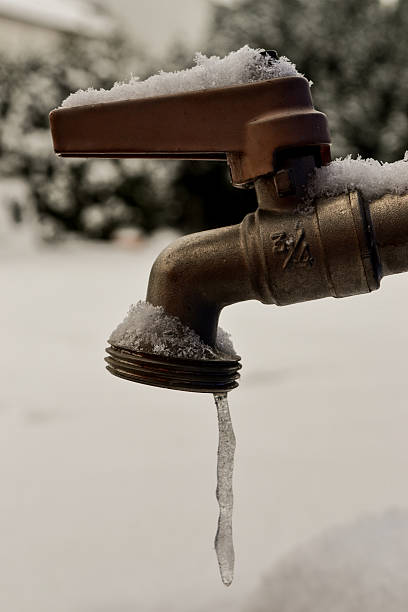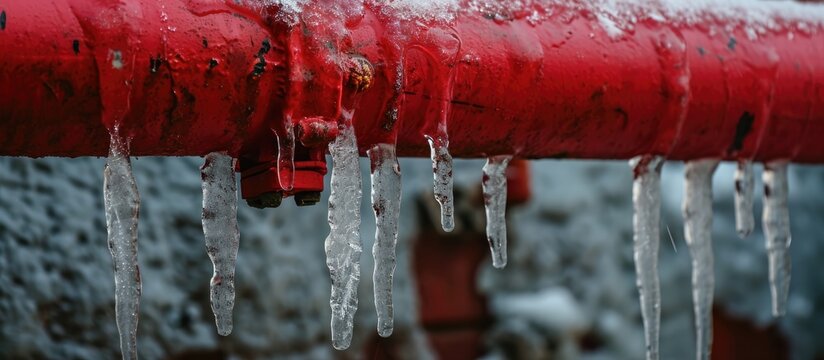Preventing Frozen Plumbing in Winter: Critical Strategies
Preventing Frozen Plumbing in Winter: Critical Strategies
Blog Article
What are your opinions about Preventing and dealing with frozen pipes?

Cold weather can wreak havoc on your pipes, specifically by freezing pipelines. Right here's exactly how to avoid it from occurring and what to do if it does.
Introduction
As temperature levels decline, the danger of frozen pipes increases, possibly bring about expensive repair work and water damages. Comprehending how to stop icy pipes is critical for house owners in cold environments.
Prevention Tips
Shielding prone pipes
Cover pipelines in insulation sleeves or utilize warmth tape to safeguard them from freezing temperature levels. Focus on pipelines in unheated or exterior areas of the home.
Home heating techniques
Maintain interior areas properly heated up, specifically locations with plumbing. Open cupboard doors to permit cozy air to flow around pipelines under sinks.
Exactly how to determine icy pipelines
Try to find reduced water flow from faucets, uncommon odors or sounds from pipes, and noticeable frost on exposed pipes.
Long-Term Solutions
Structural modifications
Think about rerouting pipelines away from outside wall surfaces or unheated locations. Include extra insulation to attics, cellars, and crawl spaces.
Updating insulation
Invest in top quality insulation for pipes, attics, and walls. Appropriate insulation helps maintain consistent temperature levels and reduces the threat of icy pipelines.
Shielding Outside Pipes
Yard pipes and exterior taps
Disconnect and drain pipes garden pipes before wintertime. Install frost-proof spigots or cover outside taps with insulated caps.
Understanding Frozen Pipelines
What creates pipes to ice up?
Pipes ice up when revealed to temperatures below 32 ° F (0 ° C) for prolonged periods. As water inside the pipes ices up, it increases, taxing the pipe wall surfaces and potentially triggering them to burst.
Dangers and damages
Frozen pipelines can lead to water disruptions, property damage, and costly fixings. Burst pipes can flood homes and trigger substantial structural damages.
Signs of Frozen Pipeline
Recognizing frozen pipelines early can stop them from breaking.
What to Do If Your Pipelines Freeze
Immediate activities to take
If you believe icy pipes, maintain taps open to ease stress as the ice thaws. Make use of a hairdryer or towels soaked in hot water to thaw pipes slowly.
Final thought
Preventing frozen pipelines calls for aggressive measures and quick feedbacks. By understanding the causes, indicators, and safety nets, house owners can secure their plumbing during winter.
5 Ways to Prevent Frozen Pipes
Drain Outdoor Faucets and Disconnect Hoses
First, close the shut-off valve that controls the flow of water in the pipe to your outdoor faucet. Then, head outside to disconnect and drain your hose and open the outdoor faucet to allow the water to completely drain out of the line. Turn off the faucet when done. Finally, head back to the shut-off valve and drain the remaining water inside the pipe into a bucket or container. Additionally, if you have a home irrigation system, you should consider hiring an expert to clear the system of water each year.
Insulate Pipes
One of the best and most cost-effective methods for preventing frozen water pipes is to wrap your pipes with insulation. This is especially important for areas in your home that aren’t exposed to heat, such as an attic. We suggest using foam sleeves, which can typically be found at your local hardware store.
Keep Heat Running at 65
Your pipes are located inside your walls, and the temperature there is much colder than the rest of the house. To prevent your pipes from freezing, The Insurance Information Institute suggests that you keep your home heated to at least 65 degrees, even when traveling. You may want to invest in smart devices that can keep an eye on the temperature in your home while you’re away.
Leave Water Dripping
Moving water — even a small trickle — can prevent ice from forming inside your pipes. When freezing temps are imminent, start a drip of water from all faucets that serve exposed pipes. Leaving a few faucets running will also help relieve pressure inside the pipes and help prevent a rupture if the water inside freezes.
Open Cupboard Doors
Warm your kitchen and bathroom pipes by opening cupboards and vanities. You should also leave your interior doors ajar to help warm air circulate evenly throughout your home.

Hopefully you liked our article on Winter Plumbing Precautions: Preventing Frozen Pipes. Many thanks for taking the time to read through our blog post. So long as you enjoyed reading our blog entry please remember to share it. I am grateful for your time. Revisit us soon.
Schedule Appointment Report this page